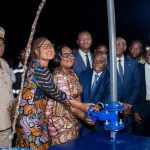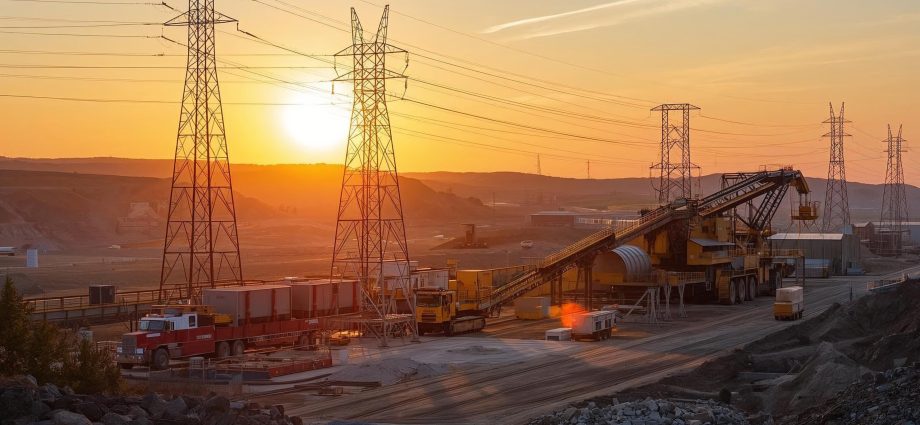The closure of the Beeshoek Mine in late 2025 highlights the growing challenges facing South Africa’s iron ore industry as economic, infrastructural, and structural pressures reshape the mining landscape. Once employing 622 permanent workers, the mine’s shutdown underscores deep-rooted issues within South Africa’s integrated steel supply chain and the declining competitiveness of its mining sector.
Located in the Northern Cape Province, Beeshoek was operated by Assmang, a joint venture between African Rainbow Minerals (ARM) and Assore. For decades, the mine’s operations were closely tied to ArcelorMittal South Africa, the country’s largest steel producer. This single-customer model created long-term stability but also dependency. When ArcelorMittal’s financial difficulties intensified, Beeshoek’s economic foundation became unsustainable, leading to its eventual closure.
ArcelorMittal South Africa’s decision to cease iron ore purchases from Beeshoek stemmed from severe financial pressures, weak domestic steel demand, and mounting operational costs. High electricity tariffs from Eskom, inefficient freight logistics through Transnet, and increased competition from cheaper Chinese imports and local mini-mills using recycled scrap all contributed to eroding profitability. As ArcelorMittal sought to cut input costs, the long-term supply agreement with Beeshoek was allowed to expire in June 2025, followed by a complete halt in month-to-month purchases by July. Mining operations formally ended by the end of October, and workforce retrenchments took effect on November 30, 2025.
Assmang subsequently placed Beeshoek on care and maintenance—a temporary status designed to preserve infrastructure while minimizing costs and maintaining environmental compliance. This approach allows the company to retain the option of restarting operations should market conditions improve, though it still entails regulatory oversight, environmental monitoring, and minimal on-site staffing for safety and security.
The closure directly impacted 622 employees, with ARM confirming compliance with South Africa’s Labour Relations Act during the retrenchment process. However, the economic consequences extend far beyond direct job losses. The shutdown affects transport and logistics workers, suppliers, service providers, and local businesses dependent on mining income, leading to broader economic strain within the Northern Cape. The ripple effect of a mine closure often multiplies job losses severalfold across supporting industries and local communities.
The Beeshoek case exposes the systemic difficulties confronting South Africa’s steel and iron ore industries. High input costs, unreliable infrastructure, and global competition have eroded profitability. Eskom’s escalating power prices and Transnet’s rail inefficiencies have compounded challenges for inland mines reliant on domestic steel demand. Meanwhile, global competition—particularly from low-cost Chinese producers—has intensified, leaving traditional mining-to-steel supply chains increasingly unviable.
For Beeshoek to resume operations, several conditions would need to align: the establishment of a new long-term buyer, recovery in domestic steel demand, improved logistics, and significant investment to modernize aging infrastructure. These requirements appear challenging in the short term, as export routes remain constrained and the cost base remains high. ARM has indicated that technological upgrades would be necessary to improve efficiency, but the scale of capital investment relative to potential returns remains uncertain.
At the same time, ArcelorMittal South Africa is undergoing its own restructuring, deferring closures at its long steel plants in Newcastle and Vereeniging while negotiating with government and labor bodies to stabilize operations. The company’s strategy focuses on cost reductions, product diversification, and asset optimization, but the underlying problems of high energy costs and weak logistics remain unresolved.
The Beeshoek closure mirrors a wider trend in South Africa’s mining sector, where aging infrastructure, energy constraints, and rising operational costs have undermined competitiveness. While government initiatives like the Just Energy Transition Partnership aim to modernize energy systems, they do not directly alleviate immediate cost burdens for heavy industry. Mining-dependent communities, such as those around Beeshoek, now face long-term socioeconomic challenges, including job losses, reduced municipal revenues, and migration away from mining towns.
Environmental obligations remain ongoing under care and maintenance. ARM continues to monitor water quality, control dust emissions, and manage site rehabilitation under the supervision of the Department of Mineral and Petroleum Resources. Regardless of whether the mine reopens, long-term environmental liability remains a core responsibility.
The Beeshoek case offers lessons for the global mining industry. Heavy reliance on a single customer or domestic market leaves operations vulnerable to sudden shifts in economic conditions. Diversifying customer bases, maintaining multiple export channels, and investing in infrastructure resilience are crucial to mitigate these risks. For investors, the situation underscores the importance of assessing regulatory environments, infrastructure reliability, and market diversification when evaluating mining ventures.
Ultimately, Beeshoek’s closure serves as both a cautionary tale and a reflection of broader structural issues affecting South Africa’s mining landscape. Without significant reforms to energy, logistics, and industrial policy, the country’s iron ore sector may continue to face decline, even as global demand for raw materials remains strong.















